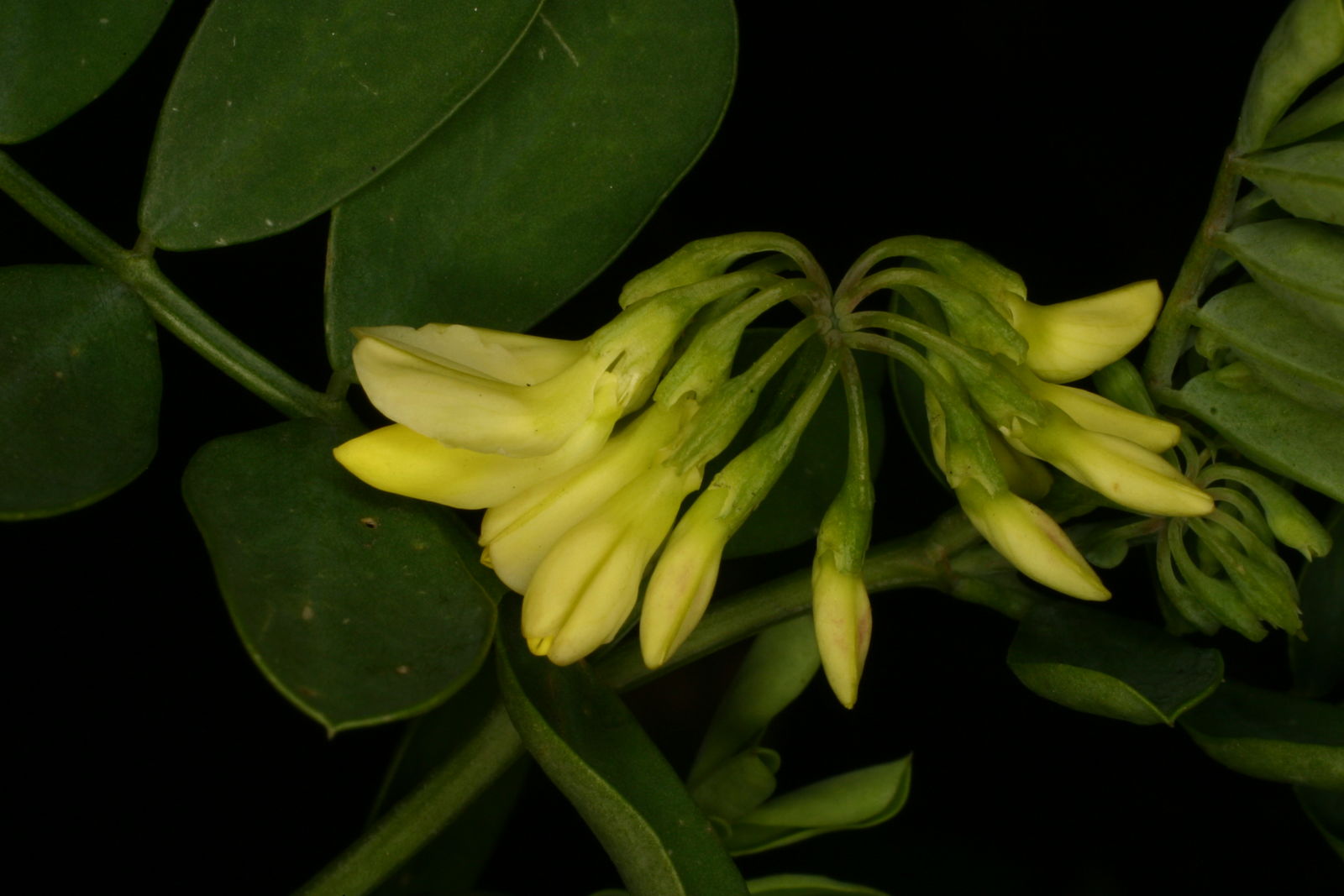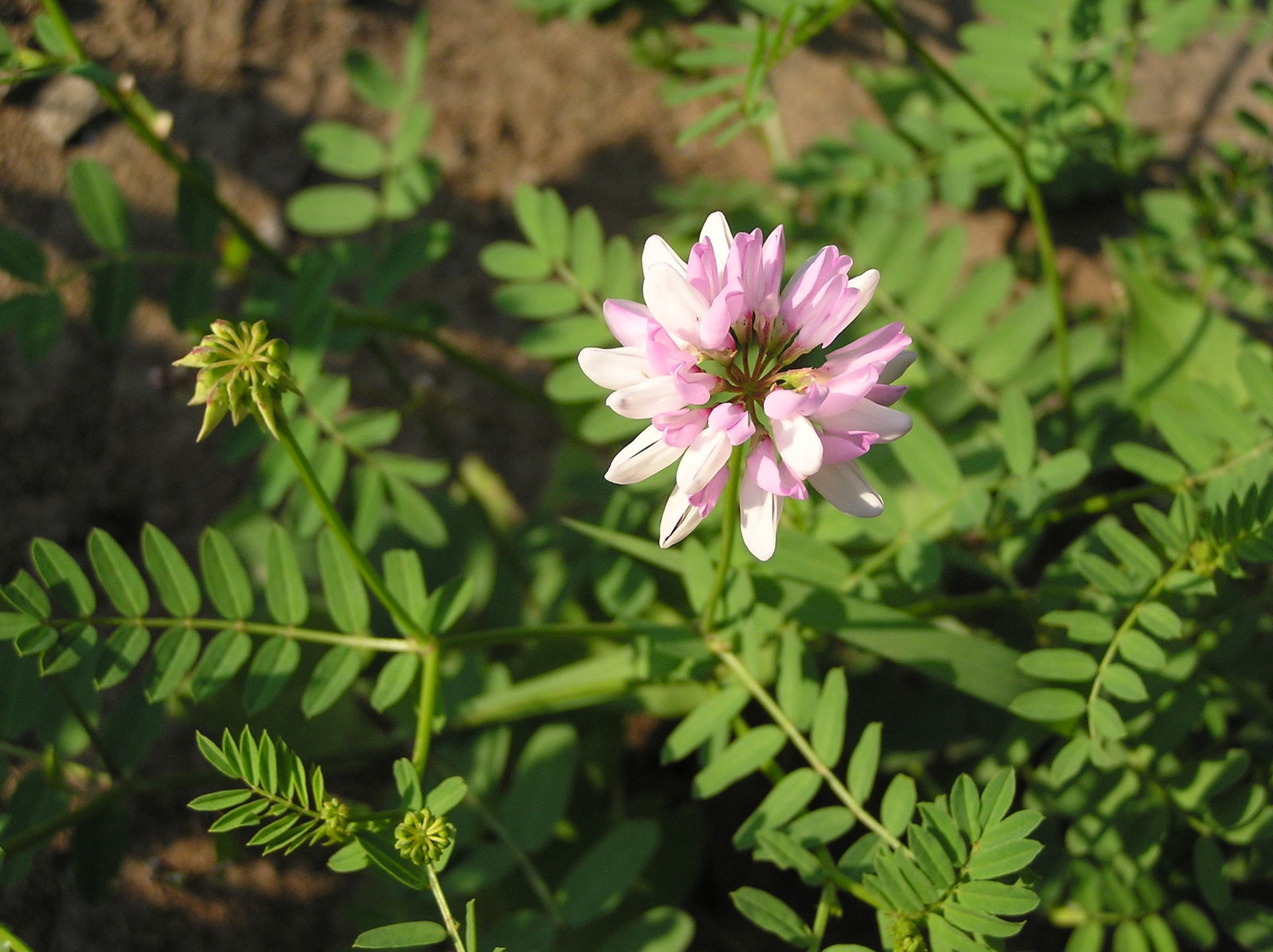Horny Horned Pea
coronilla varia
Also known as: ["Horny Horned Pea","Sickle Medick","Scorpioid Medick"]
Overview
A deciduous shrub with pinnate leaves and yellow, pea-like flowers arranged in a scorpion-tail shape.
Benefits & Perks
["long-flowering","drought tolerant","wildlife attractant (bees, butterflies, birds)"]
Botanical Classification
| Phylum: | Magnoliophyta |
| Class: | Magnoliopsida |
| Order: | Fabales |
| Family: | Fabaceae |
| Genus: | Coronilla |
| Botanical Name: | Coronilla varia |
Plant Characteristics
Basic Information
- Category: Flowers
- Suitable Location: border plantings, rock gardens, or as a specimen shrub
- Suitable For:
- Is Weed: No
- Allergenicity: low
Environmental Needs
- Climate: {"temperatureRange":"–15–35°C"}
- Hardiness: {"zones":"4–8"}
- Misting: rarely required, only if ambient humidity is very low
- Drainage: Fast-draining; avoid waterlogged conditions.
- Soil Type: Well-draining, loamy soil with added organic matter; tolerates poor soils.
Maintenance Level
- Maintenance Level: moderate
- Toughness Level: moderate
- Pruning Frequency: Annually in late winter or early spring; light pruning can be done after flowering.
- Pruning Intensity: Moderate; remove up to one-third of old growth if needed.
Care Details
Ideal Sunlight Coverage:
Full sun (6–8 hours/day); tolerates partial shade, especially in hot climates.
Sunlight Tolerance Tips:
Acclimate gradually to intense sunlight; protect from harsh afternoon sun; adjust placement based on seasonal light changes.
Care Requirements
Care Difficulty
moderatemoderate
Sunlight
full sun to partial shade
Rotate plant for even growth; use sheer curtains in intense sun; avoid direct indoor light.
Watering
every 7–10 days during growing season, reduce in winter
Water thoroughly but infrequently; ensure soil dries between waterings; avoid overwatering.
Soil
well-drained, moderately fertile soil
pH: Slightly alkaline to neutral (pH 6.5–7.5).
Ensure good drainage; amend with organic matter; test pH if needed.
Temperature
Hardy in USDA zones 4–7; tolerates cold down to -30°F (-34°C); prefers moderate temperatures in summer.
Protect from frost in early spring; avoid placing in drafty areas; monitor for heat stress in summer.
Fertilizing
every 4–6 weeks during spring and summer
Fertilize lightly; avoid high-nitrogen formulas; water before and after feeding.
Propagation
Methods
Stem cuttings or division; seeds can also be sown in spring.
Step-by-Step Propagation Guide
- Take cuttings.
- Apply rooting hormone.
- Plant in medium.
- Keep moist and warm.
Best Time: Late spring to early summer when the plant is actively growing.
Environment
Warm, humid conditions with indirect light; maintain consistent moisture.
Medium
Well-draining potting mix with perlite or sand; can also root in water.
Hormone
Optional, but recommended for faster rooting.
Timeline
Roots develop in 3–6 weeks; new growth appears in 2–3 months.
Tools Needed
Pruners, rooting hormone, pots, well-draining medium.
Quick Tips
Use healthy, non-flowering stems; keep cuttings out of direct sun; maintain humidity.
Pruning & Repotting
Pruning Guide
Method
Cut back stems to healthy buds; thin out crowded areas; shape as desired.
Pruning Plan
Prune to maintain shape, encourage bushiness, and remove dead or diseased growth.
Tools
Pruning shears, loppers, gloves.
Checklist
Sterilize tools; prune dead/damaged growth; shape plant; clean up debris.
Repotting Guide
Best Season
Early spring before new growth begins.
Pot Size
Increase pot size by 2–3 inches in diameter.
Method
Remove plant gently; trim roots if necessary; repot in fresh, well-draining soil.
Suggestions
Repot every 2–3 years or when roots fill the container; beneficial for container-grown plants.
Checklist
Prepare new pot; trim roots; add fresh soil; water lightly; place in shade for a few days.
Advanced Care Tips
Watering Mastery
Watering Checklist
Check soil moisture; water deeply; ensure drainage; adjust for season.
How to Apply Water Properly
Water at the base of the plant, ensuring moisture reaches the root zone; allow excess water to drain away; water in the morning to reduce evaporation.
Watering Schedule Tips
Water deeply once the top inch of soil is dry; reduce frequency in winter to prevent root rot.
Soil Improvement
Add compost or well-rotted manure; incorporate perlite or sand for drainage; avoid heavy clay soils.
Temperature Stress Management
Signs of Temperature Issues
Leaf drop, yellowing, or stunted growth in extreme heat; browning or wilting in cold stress.
Cold Stress
Leaves may become brittle; growth slows or halts; roots can freeze in poorly drained soil.
Solution: Mulch heavily around the base; protect in pots by moving to sheltered locations; ensure soil is well-drained.
Hot Stress
Wilting, leaf scorch, or reduced flowering; growth may become leggy.
Solution: Provide afternoon shade; increase watering; use mulch to retain soil moisture.
Fertilizing Guide
Fertilizing Checklist
Check soil nutrients; apply sparingly; water after fertilizing; monitor for signs of burn.
Fertilizing Method
Use balanced, slow-release fertilizer in early spring; avoid over-fertilizing; reduce or stop in late summer/autumn.
Common Problems & Solutions
Toxicity Warning
Cats
Slightly ToxicCats are susceptible to mild toxicity from Coronilla varia, primarily affecting the gastrointestinal and nervous systems. The alkaloids present can induce discomfort and mild neurological signs.
⚠️ Symptoms:
🌿 Toxic Parts:
⚡ Toxic If:
if eaten
Dogs
Slightly ToxicIn dogs, ingestion of Coronilla varia can lead to mild gastrointestinal upset and potential neurological symptoms due to the presence of alkaloids. The effects are typically not life-threatening but may require veterinary attention.
⚠️ Symptoms:
🌿 Toxic Parts:
⚡ Toxic If:
if eaten
Humans
Slightly ToxicCoronilla varia contains toxic compounds, primarily alkaloids, which can cause mild to moderate gastrointestinal and neurological disturbances upon ingestion. The physiological impact is generally limited to discomfort and temporary impairment.
⚠️ Symptoms:
🌿 Toxic Parts:
⚡ Toxic If:
if eaten
Frequently Asked Questions
Q: Is Coronilla varia toxic to pets?
A: It is mildly toxic to dogs and cats.
Q: Does Coronilla varia attract wildlife?
A: Yes, it attracts bees, butterflies, and birds.
Q: How difficult is it to care for Coronilla varia?
A: It has moderate care difficulty and maintenance requirements.
Quick Reference
| Family: | Fabaceae |
| Care: | moderate |
| Light: | full sun to partial shade |
| Water: | every 7–10 days during growi |
Get Expert Care Tips
Download the Plantious app for personalized care reminders and plant identification!
Google Play App Store







